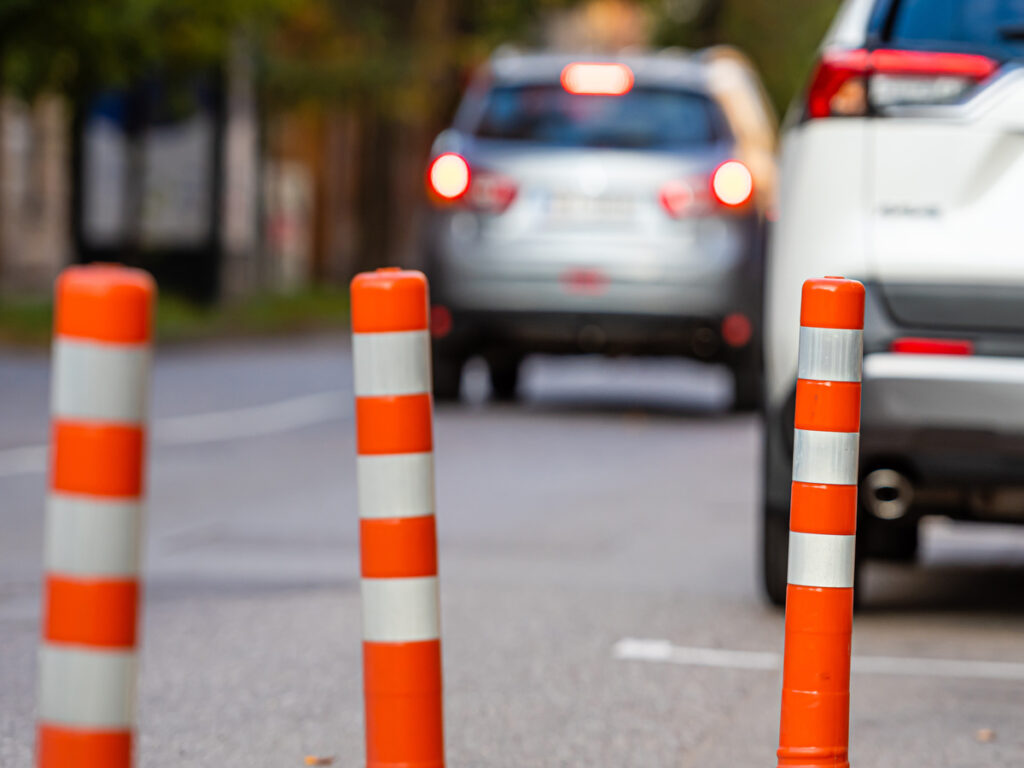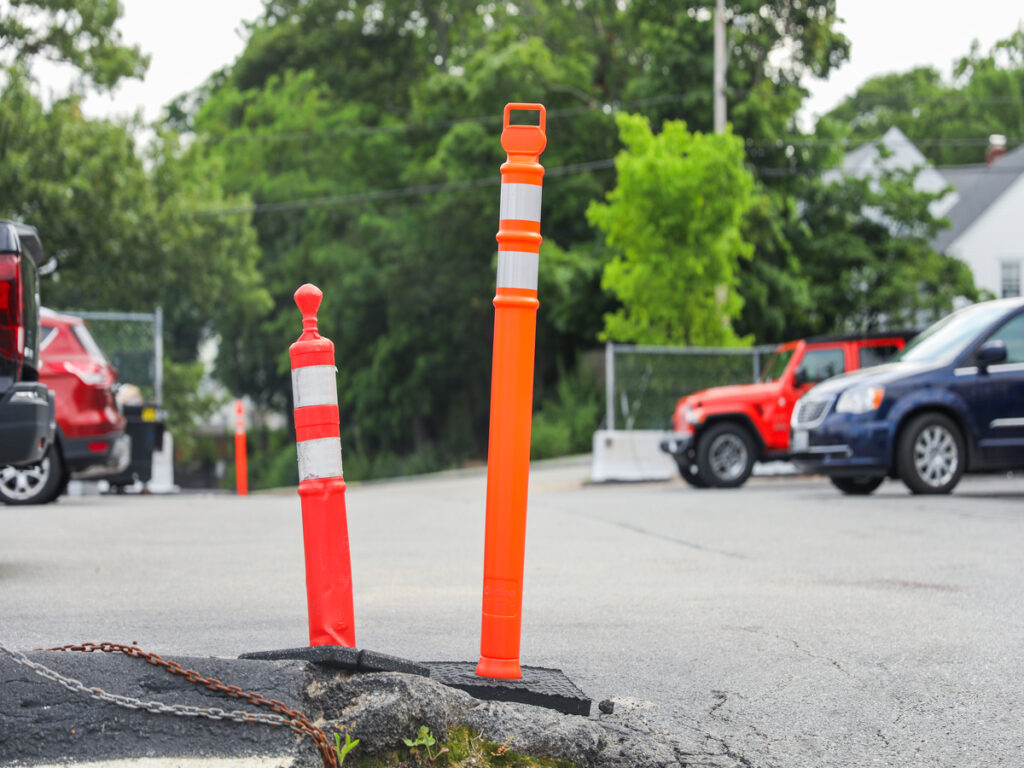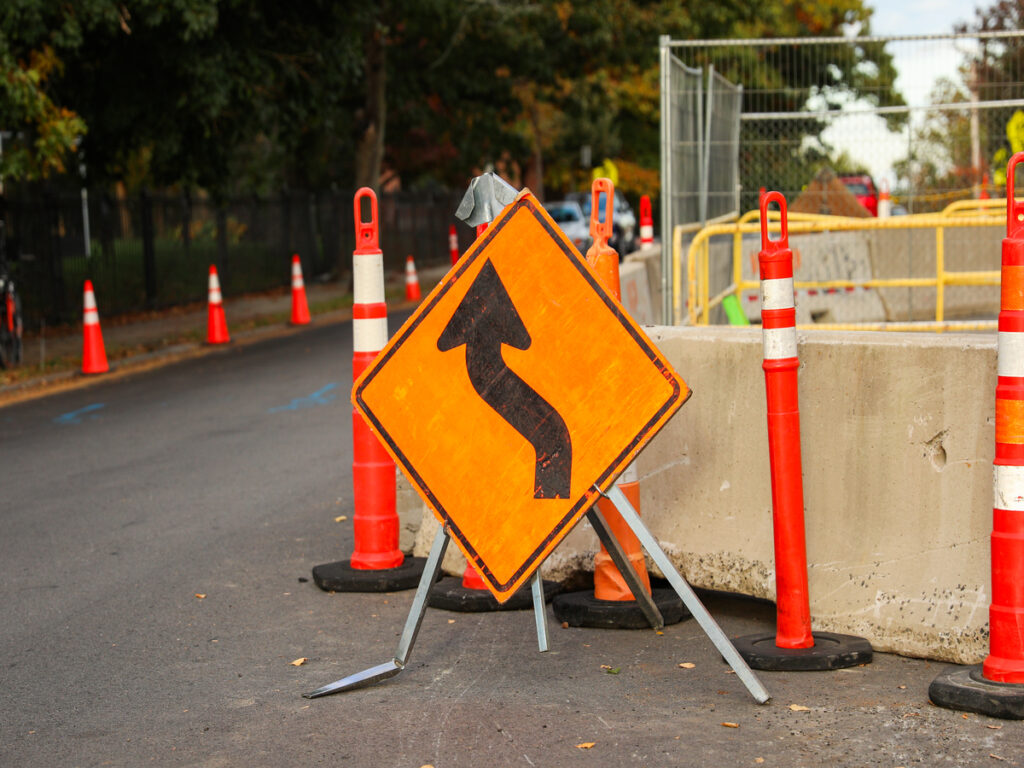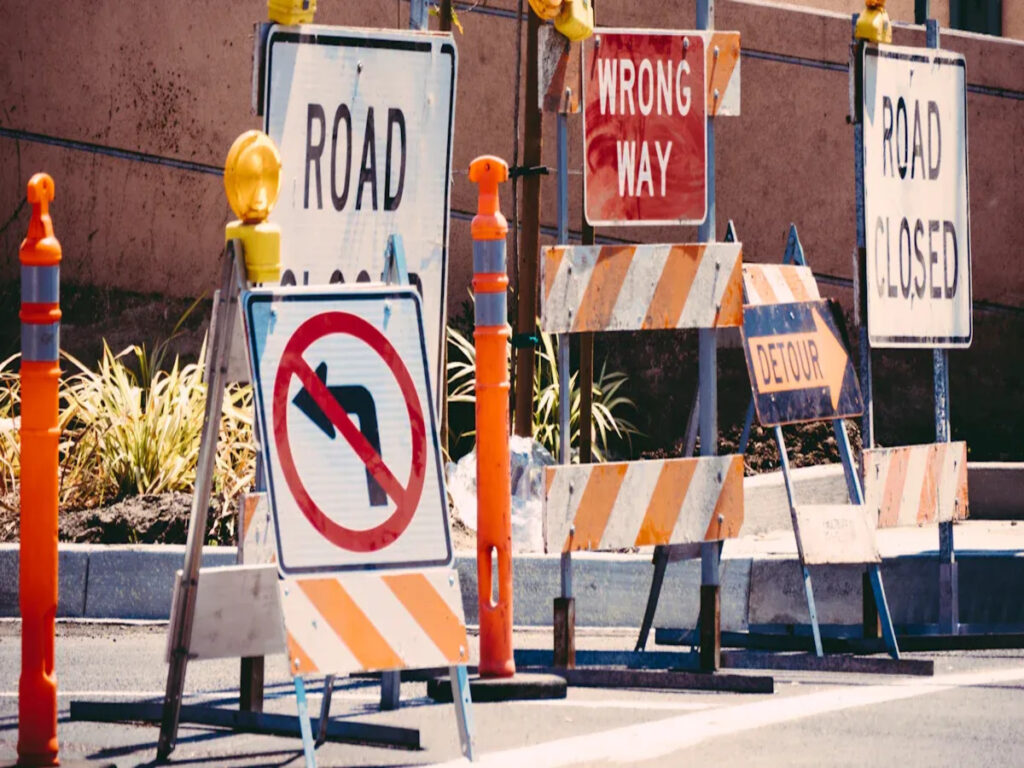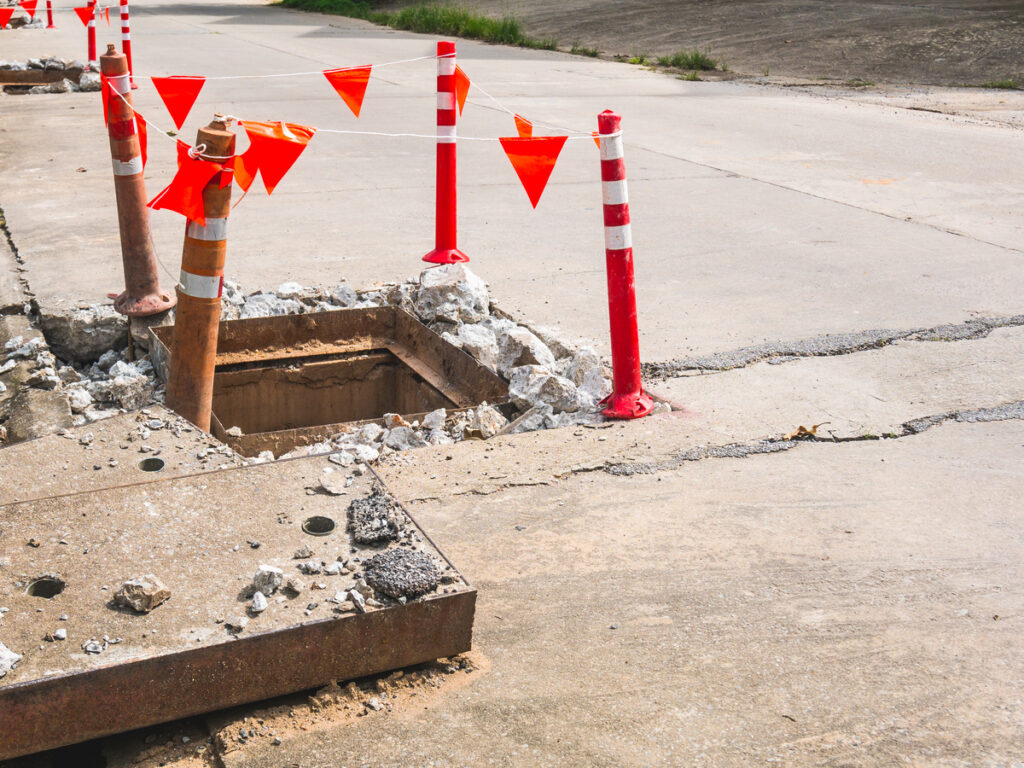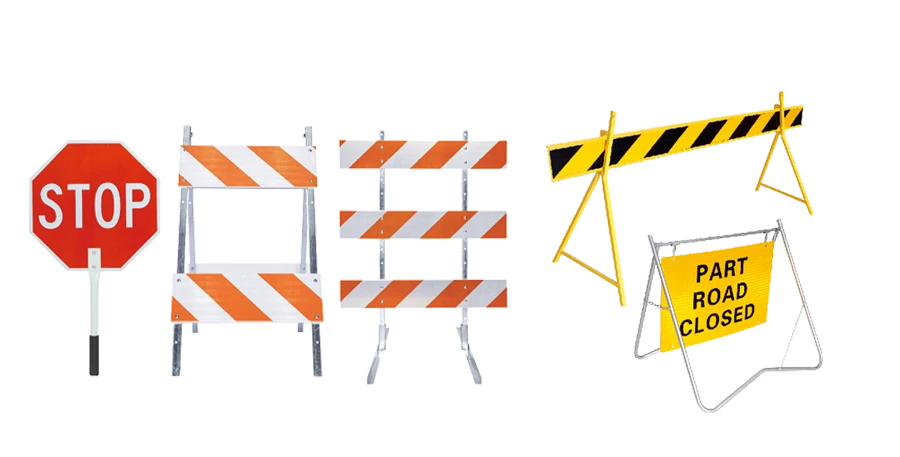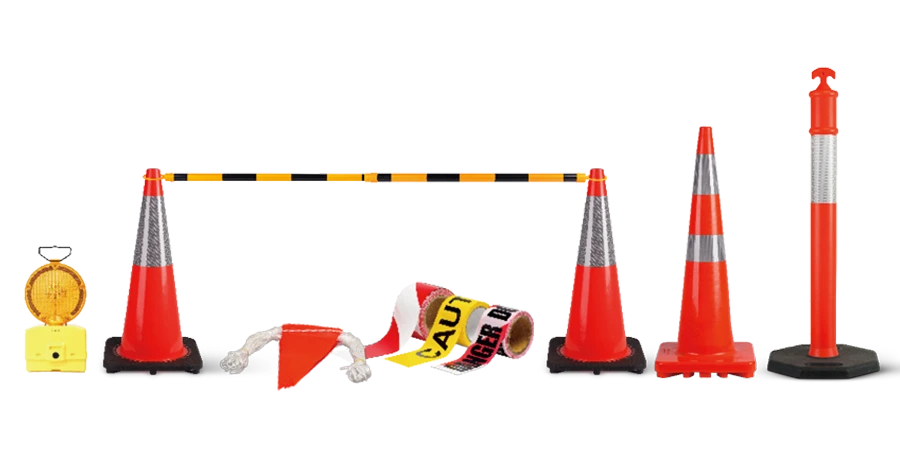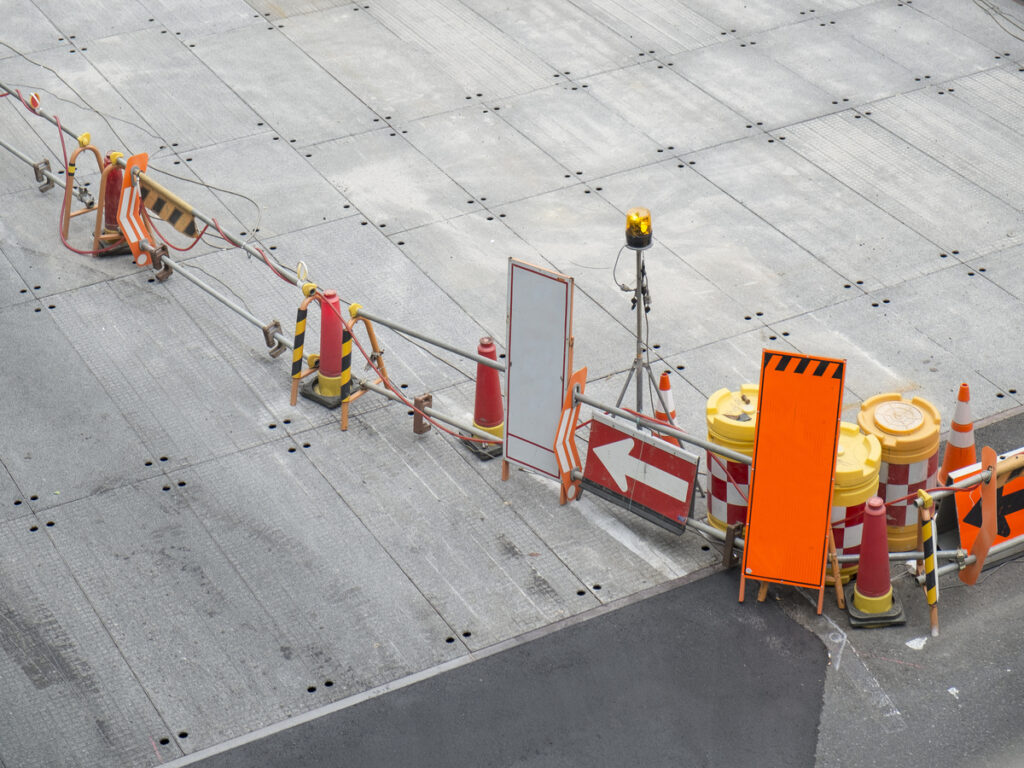
Cuando se trata de mantener la seguridad en las zonas de construcción de carreteras, Los conos de tráfico y los delineadores son herramientas indispensables. Su configuración correcta no solo guía a los automovilistas de forma segura a través de las zonas de trabajo o alrededor de las zonas de trabajo, sino que también protege a los trabajadores de la carretera., peatones, y equipo. Ya sea que esté administrando una tarea de mantenimiento rápida o un proyecto de construcción a largo plazo, understanding how to set up these devices properly is essential.
Before diving into the setup process, be sure to check out the wide selection of products available at OPTRAFICO, your trusted supplier for traffic safety solutions.
Why Proper Setup of Traffic Cones and Delineators is Critical
Dispositivos de control de tráfico like cones and delineators might look simple, but their strategic use is a cornerstone of road safety management. Improper or careless placement can lead to dangerous situations, including driver confusion, colisiones, or non-compliance with traffic regulations, which can result in fines or legal liability.
Key Benefits of Correct Setup
- Seguridad mejorada: Claro, visible guidance prevents accidents by directing traffic smoothly around hazards.
- Flujo de tráfico mejorado: Proper tapering and spacing reduce bottlenecks and sudden lane changes.
- Cumplimiento de los estándares: Adhering to MUTCD (Manual en dispositivos de control de tráfico uniformes) and local guidelines protects your project legally.
- Protección de los trabajadores: Prevents close encounters between workers and vehicles by clearly defining work zones.
Understanding Traffic Cones and Delineators: What to Use and When
Choosing the right equipment depends largely on the duration of your project, velocidad de tráfico, and environmental conditions.
Conos de tráfico
Conos de tráfico are flexible, portable devices commonly used for temporary setups:
- Tallas: Available from 18 pulgadas arriba a 36 pulgadas de altura. Conos más altos (28”-36”) are recommended for high-speed zones for better visibility.
- Material: Typically made of durable PVC or rubber, cones feature reflective collars that improve nighttime visibility.
- Estabilidad: Bases pesadas or stacking help prevent cones from tipping, especially on windy roads or busy highways.
- Usos ideales: Short-term lane closures, escenas de accidentes, or event management.
Delineadores
Delineators are upright posts designed for long-term or semi-permanent setups:
- Dimensiones: Usually between 36 y 48 pulgadas de alto, con láminas reflectantes or prismatic tape on one or both sides.
- Durabilidad: More rigid and resistente a la intemperie compared to cones, with weighted or fixed bases for stability.
- Visibilidad: Their height and reflectivity make them ideal for guiding vehicles on curves or around long work zones.
- Casos de uso: Long-term construction zones, lane guidance on highways, pedestrian walkway demarcation.
To browse top-quality delineators and bollards, visita nuestro sitio web.
Step-by-Step Instructions for Safe and Effective Setup
Paso 1: Conduct a Thorough Site Assessment
- Walk the entire work zone, observing traffic patterns, Condición de la carretera, sight distances, and potential hazards.
- Identify the start and end points for your cone taper or delineator layout.
- Consult local traffic regulations (como Muescato o Caltrans standards) to ensure compliance.
- Note environmental factors like wind, lluvia, or poor lighting that may impact device stability and visibility.
Paso 2: Calculate and Determine Proper Spacing
Spacing is essential for driver comprehension and safety:
| Tipo de carretera | Recommended Cone Spacing | Recommended Delineator Spacing | Notas |
| High-Speed Highways | 20 a 30 pies | 50 a 80 pies | Wider spacing accommodates faster vehicle speeds. |
| Calles urbanas | 10 a 15 pies | 30 a 50 pies | Closer spacing due to lower speed and more obstacles. |
| Zonas Peatonales | 5 a 10 pies | 20 a 30 pies | Ensures maximum visibility and safety for foot traffic. |
Correct spacing allows drivers enough time to adjust lanes or reduce speed, reducing sudden maneuvers that could cause crashes.
Paso 3: Deploy the Cone Taper Gradually
- Begin deployment from the farthest point of the taper and work backward toward the active work area.
- Place cones at the calculated spacing, creating a smooth and gradual lane closure.
- The taper length can be determined by multiplying the spacing by the number of cones.
- Ensure road cones are positioned straight and upright to maximize visibility.
Paso 4: Install Delineators Strategically
- Position delineators along the edge of the travel lane, around curves, and where lane boundaries need clear definition.
- Make sure the reflective side faces oncoming traffic.
- Seguro delineators with the appropriate base weights or sandbags to prevent tipping.
- Use bright prismatic reflective sheeting for nighttime or low-visibility conditions.
Paso 5: Supplement the Setup with Additional Safety Measures
- Place advance warning signs at the recommended distances to alert motorists well before the work zone.
- Use arrow boards or portable crash attenuators to protect the work zone and workers.
- Assign trained flaggers where needed to control traffic and communicate hazards.
- Ensure all personnel wear proper high-visibility safety apparel.
Paso 6: Maintain the Setup and Remove Properly
- Regularly inspect cones and delineators for damage or displacement.
- Clean reflective surfaces to maintain maximum brightness and visibility.
- Replace any worn or broken equipment promptly.
- Remove devices in the reverse order of setup once work is complete, ensuring traffic flow is restored smoothly.
For more details on choosing and using traffic cones, explore our Conos de tráfico.
Expert Tips to Enhance Safety and Efficiency
- Use Weighted Cones: For windy conditions or high-speed roads, heavier cones reduce the risk of blowovers.
- Schedule Setup Smartly: Whenever possible, conduct setup and removal during off-peak hours or at night to minimize traffic disruption.
- Inspecciones regulares: Perform hourly checks in active zones, especially during heavy traffic or poor weather.
- Train Your Crew: Make sure all workers understand traffic control plans, uso del equipo, and safety protocols.
- Keep Reflective Surfaces Clean: Dirt and grime reduce visibility — clean cones and delineators regularly.
- Communicate: Use radios or hand signals for coordinated crew movements in complex setups.
Preguntas frecuentes (Preguntas frecuentes)
What is the recommended spacing between cones and delineators?
Spacing varies with road speed and environment. En carreteras, cones should be spaced 20-30 pies separados, with delineators spaced 50-80 pies separados. Closer spacing is used in urban or pedestrian-heavy areas.
How can I keep cones stable in Condiciones ventosas?
Choose cones with heavy, weighted bases or add ballast such as sandbags. For delineators, use appropriate weighted bases per local guidelines to maintain stability.
Are cones alone enough for highway work zones?
No. Highway work zones require a comprehensive traffic control plan including cones, delineadores, advance señales de advertencia, tablas de flecha, abanderados, and crash vehicles for optimal safety.
How often should traffic control devices be inspected?
Inspection should be frequent—at least once per hour in active, zonas de alto tráfico, and daily in less active areas. Promptly correct any issues to maintain safety.
Where can I get expert advice or products for traffic control?
Visita OPTRAFFIC Contact Us to speak with professionals or browse their extensive product range.
Pensamientos finales
Setting up road cones and delineators with care, precisión, and adherence to best practices dramatically improves safety for everyone involved. The key is proper planning, choosing the right devices, maintaining clear visibility, and following regulatory guidelines.
By using this comprehensive guide, you’re equipped to create safer work zones that protect your crew and the traveling public alike.
For in-depth insights on manufacturing and regional trends in traffic cones, be sure to check out here.

